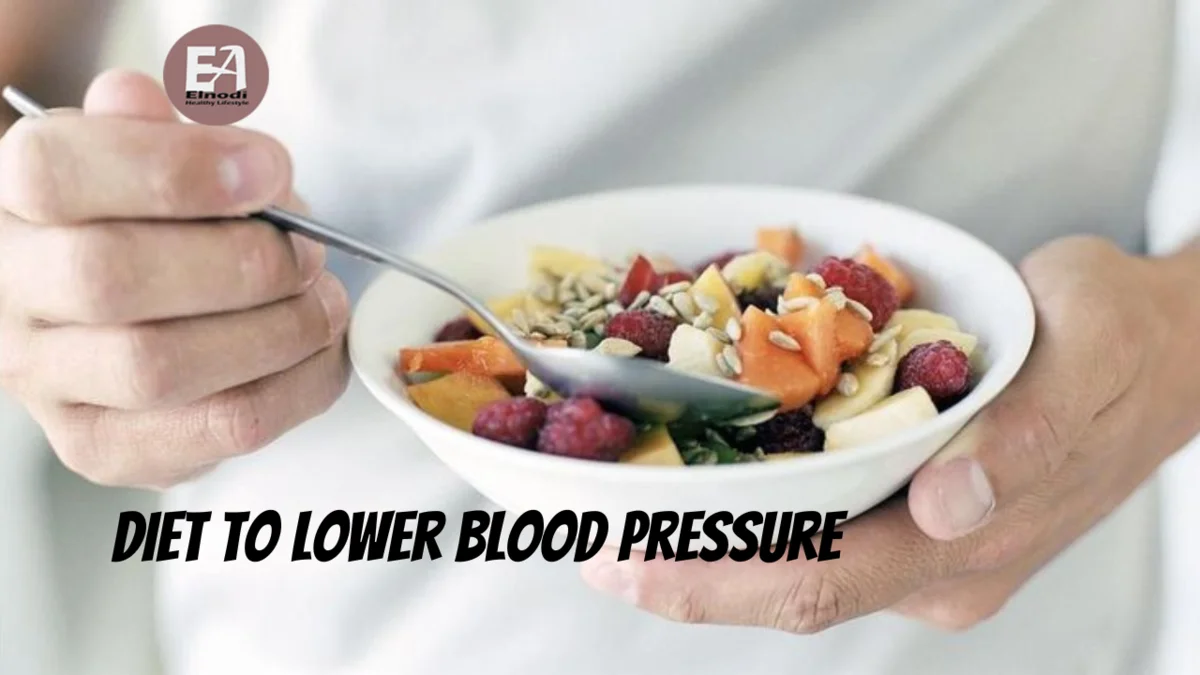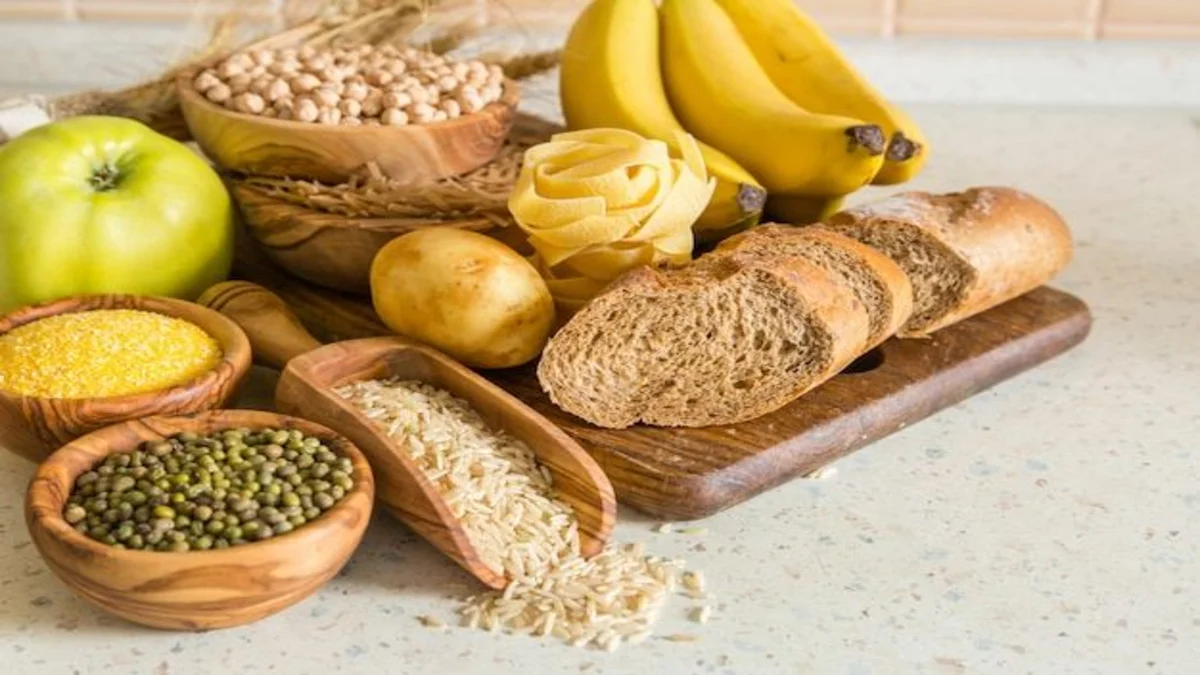Are you looking diet to lower blood pressure fast and effectively? With the plethora of diets available, it can be an overwhelming task to determine which one is most suitable for your specific requirements. I want to assure you that we have diligently researched on your behalf.
High blood pressure is a prevalent health condition impacting numerous individuals all around the globe. If not properly managed, it can result in significant health issues. Fortunately, diet plays a crucial role in managing blood pressure levels. Finding the ideal diet plan can be quite a difficult task.
Track What You Eat
Many individuals lack awareness about the number of calories they consume daily. People might not fully grasp the extent of their food consumption and consequently struggle with comprehending why shedding weight is a challenge.
Writing down the foods you eat, including the portion sizes, can let you see the truth about your food intake. To manage your blood pressure and achieve weight loss, you can gradually reduce your calorie intake and portion sizes.
Being mindful of how much alcohol you consume is an important aspect to consider. Consuming alcohol can also lead to an elevation in blood pressure.
High blood pressure: what is the connection with salt?
It is widely understood that the presence of sodium in salt has the potential to contribute to elevated blood pressure levels. According to the Centers for Disease Control and Prevention (CDC), Americans consume far more sodium than they need. The 2020–2025 Dietary Guidelines for Americans advise that adults should consume less than 2,300 mg of sodium each day. If you have high blood pressure, the American Heart Association recommends an intake of no more than 1,500 mg daily.
It is crucial to consider your sodium consumption, but it is just a single component of the larger picture. To minimize your risk of heart attack, stroke, and other complications, it is important to consume foods that promote healthy blood pressure levels.
Diet to lower blood pressure fast: 7-Day Plan

Day 1: Kickstart with Fresh Fruits and Vegetables Begin your journey towards lower blood pressure by loading up on fresh fruits and vegetables rich in potassium, magnesium, and fiber. Incorporate a variety of colorful options such as leafy greens, berries, bananas, and avocados to nourish your body with essential nutrients while promoting heart health.
Day 2: Embrace Heart-Healthy Fats Swap saturated and trans fats for heart-healthy alternatives like olive oil, nuts, seeds, and fatty fish high in omega-3 fatty acids. These fats help reduce inflammation, improve cholesterol levels and support overall cardiovascular function, contributing to lower blood pressure levels.
Day 3: Focus on Whole Grains and Legumes Replace refined grains with whole grains such as brown rice, quinoa, oats, and legumes like lentils, chickpeas, and beans. These complex carbohydrates provide sustained energy, fiber, and important minerals, aiding in blood pressure regulation and promoting satiety throughout the day.
Day 4: Limit Sodium Intake Take proactive measures to reduce sodium intake by avoiding processed foods, canned soups, and salty snacks. To enhance taste without compromising your blood pressure goals, choose fresh homemade meals seasoned with herbs, spices, and citrus flavors. Be mindful of hidden sources of sodium and aim to keep your daily intake within recommended limits.
Day 5: Incorporate Calcium-Rich Foods Include calcium-rich foods such as low-fat dairy products, fortified plant-based alternatives, and leafy greens to support healthy blood pressure levels. Calcium plays a crucial role in blood vessel function and muscular contraction, making it an essential nutrient for cardiovascular health.
Day 6: Hydrate with Herbal Teas and Water-Rich Foods Stay hydrated by drinking plenty of water throughout the day and incorporating herbal teas, such as hibiscus or green tea, known for their blood pressure-lowering properties. Additionally, prioritize water-rich foods like cucumbers, watermelon, and tomatoes to maintain optimal hydration and support overall wellness.
Day 7: Plan for Long-Term Success As you conclude this 7-day plan, reflect on your dietary habits and identify sustainable changes to maintain healthy blood pressure levels in the long run. To maintain a well-rounded diet, it is important to consume a variety of fruits, vegetables, lean proteins, and whole grains while limiting the consumption of processed foods, sugary drinks, and excessive sodium. Incorporate regular physical activity, stress management techniques, and adequate sleep to further enhance your cardiovascular health and well-being
How to Lower Blood Pressure With Food?
| Food Category | Examples | How They Help Lower Blood Pressure |
|---|---|---|
| Fruits and Vegetables | Berries, bananas, leafy greens, avocados | Rich in potassium, magnesium, and fiber, which help regulate blood pressure |
| Whole Grains | Brown rice, quinoa, oats, whole wheat bread | Provide fiber and nutrients that support heart health and blood pressure regulation |
| Lean Proteins | Skinless poultry, fish, legumes, tofu | Low in saturated fat and rich in protein, aiding in blood pressure management |
| Fatty Fish | Salmon, mackerel, trout, sardines | High in omega-3 fatty acids, which reduce inflammation and lower blood pressure |
| Nuts and Seeds | Almonds, walnuts, flaxseeds, chia seeds | Packed with healthy fats, fiber, and minerals that support heart health and lower blood pressure |
| Low-Fat Dairy | Greek yogurt, skim milk, low-fat cheese | Good sources of calcium and protein, which help regulate blood pressure levels |
| Herbs and Spices | Garlic, turmeric, cinnamon, ginger | Possess anti-inflammatory properties and may help relax blood vessels, lowering blood pressure |
| Olive Oil | Extra virgin olive oil | Contains monounsaturated fats and antioxidants that promote heart health and lower blood pressure |
| Dark Chocolate | High-quality dark chocolate (70% or higher cocoa content) | Contains flavonoids that improve blood flow and may help lower blood pressure |
| Beets | Beetroot juice, roasted beets | Rich in nitrates, which convert into nitric oxide in the body, promoting vasodilation and lowering blood pressure |
These meals can assist in managing high blood pressure and enhance overall cardiovascular health. Instead, eat a diet rich in whole grains, lean meats, fruits, vegetables, and healthy fats to maintain appropriate blood pressure levels. (1) (2) (3)
Foods to avoid with high blood pressure
| Category | Foods to Avoid |
|---|---|
| High-Sodium Foods | Processed meats (e.g., bacon, deli meats) |
| Canned soups and broths | |
| Packaged snacks (e.g., chips, pretzels) | |
| Fast food and fried foods | |
| Pickled and canned vegetables | |
| Condiments high in sodium (e.g., soy sauce) | |
| Salted nuts and seeds | |
| Instant noodles and ready-to-eat meals | |
| Bottled salad dressings | |
| Frozen meals and convenience foods | |
| Cheese and salty dairy products | |
| High-Sugar Foods | Sugary beverages (e.g., soda, energy drinks) |
| Candies and sweets | |
| Pastries, cakes, and cookies | |
| Sweetened breakfast cereals | |
| Flavored yogurts and dairy desserts | |
| Sweetened sauces and syrups | |
| Ice cream and frozen desserts | |
| High-Fat Foods | Fried foods |
| Fatty cuts of meat | |
| Full-fat dairy products (e.g., whole milk, cream) | |
| Processed and hydrogenated oils | |
| Butter and margarine | |
| Commercially baked goods with trans fats | |
| Creamy sauces and gravies | |
| High-fat spreads (e.g., mayonnaise) | |
| Coconut oil and palm oil |
FAQs
Can high blood pressure be reduced by eating?
can drinking water lower blood pressure?
How can I lower my BP in 5 minutes?
Which fruit Dash is best to reduce high BP?
Sources
- https://www.ncbi.nlm.nih.gov/pmc/articles/PMC7766318/ ↩︎
- https://pubmed.ncbi.nlm.nih.gov/32631027/ ↩︎
- https://www.ncbi.nlm.nih.gov/pmc/articles/PMC8590666/ ↩︎





